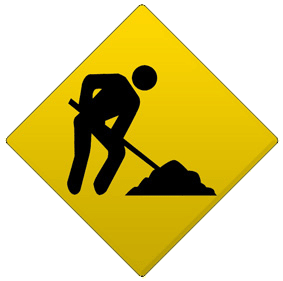

This learning path is under construction.
If someone dropped you into a wilderness, could you survive? Our ancestors did, in those very places. This thread explores tools our ancestors made, and skills they used, to survive and thrive.
Left in a wilderness, your thoughts would soon turn to food. For roughly 90 percent of the time that modern humans have existed, eating meant gathering wild plants and hunting or fishing for wild animals.
Wild plants were gathered in baskets and bags. Those artifacts have rarely survived, so archaeologists rely heavily on the few examples from dry caves.
Many nuts, berries, and leafy greens can be eaten raw, but hard seeds must be ground between two stones to create a flour. Many hard seeds are worth the effort becaue of their high energy content. The simplest toolkit for seed grinding consists of a slab that sits on the ground and a smaller stone held in one hand or both hands. The next two photos show examples of these tools.
In North America, the stone slab is called a "metate" (meh-tah-tee), based on an Aztec word. The surface of the slab has become smooth because of the many meals were prepared on it over time. The smaller stone is called a "mano" (mah-noh, the Spanish word for "hand"). It also shows smooth facets due to repeated grinding.
Hunting often involved tools with hard, sharp ends that remain intact today.
Flaked stone points like these could be made quickly by a skilled flintknapper, so they could be replaced when they broke. Although the people who made these points were not on the same continent, they chose very similar shapes for their points. This similarity of design was dictated by the common functional need: a sharp point that could be attached to a wood shaft.
In a coastal environment, where food came from the sea, a different type of weapon was used. The purpose of this harpoon head is similar to the spearpoints shown above, but it was intended to kill a different kind of prey.
Before smelting was invented, only some people had the chance to make metal points such as these two. The green color comes from native copper that has oxidized over time. Where native copper occurs naturally, it can be cold-hammered into a point. It can also be repaired if it is bent or broken. Once people developed smelting technology, they could make a greater variety of shapes.
All of the points on this page are long enough that they were probably used on the ends of spears thrown by hand, or with darts thrown with an atlatl. Eventually, most human groups turned to miniature spears propelled by force stored in bent wood—the bow and arrow. All three types of weapons (hand-thrown spears, atlatls and darts, and bows and arrows) can be fashioned by would-be survivors from materials found in most terrestrial environments.
All content copyright © Maxwell Museum of Anthropology, University of New Mexico. High-resolution versions of photographs may be ordered from the Maxwell Museum's photo archives. Please make note of the catalogue number. For more information please visit the photo archives web page
Page last revised on February 6, 2012. Please report problems to toh@unm.edu